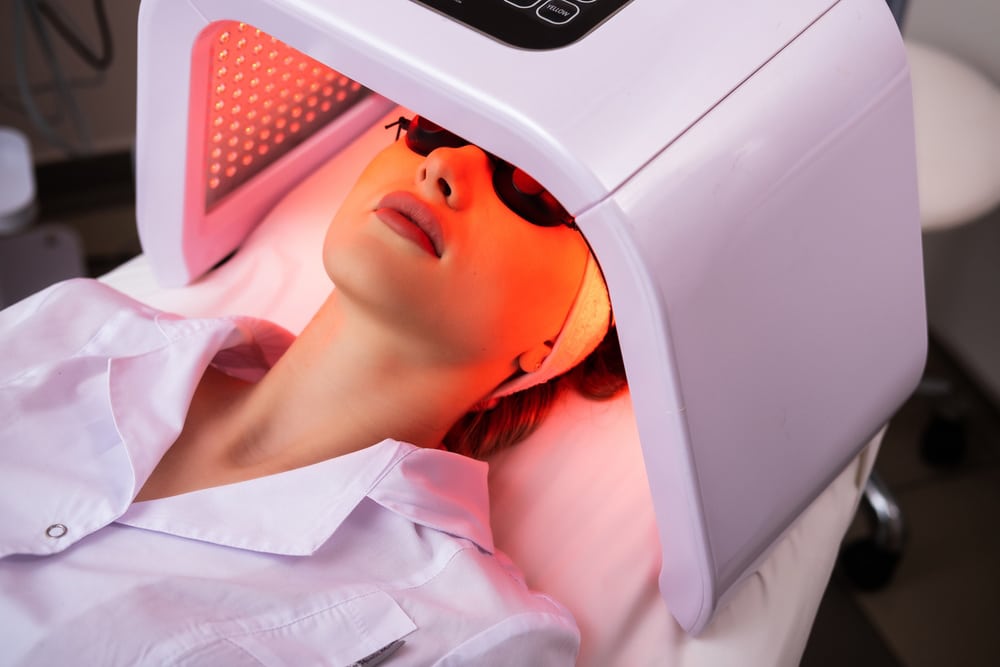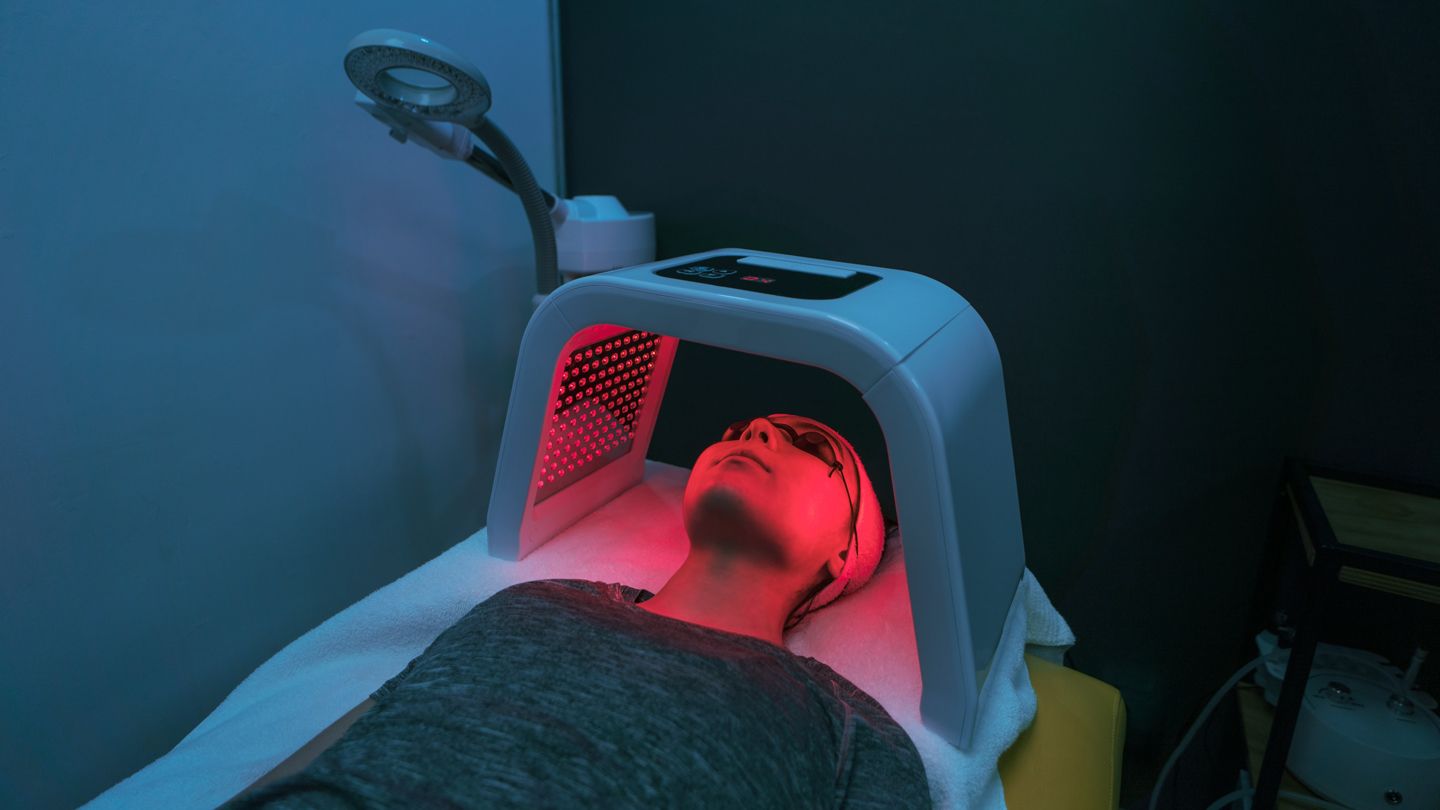As red light therapy has gained more popularity only in the last decade, there are still many ambiguities and confusion about its benefits, like pain relief and scar elimination, its mechanism of work, and, most importantly, side effects. So, can red light therapy burn skin?
People’s worries about the safety of red light therapy have increased along with their interest in it. However, we will assist you in dispelling your fears by addressing the rumors and offering evidence-based insights.
As this type of therapy is often correlated with tanning and UV, it is only natural that people would have this fear. But worry not; we will disclose everything you need to know regarding this matter.
In continuation, you can read more about the difference between tanning and red light therapy devices and how to stay safe during your red light therapy sessions and see the results instantly.

Can Red Light Therapy Burn Skin?
With red light therapy being relatively newer in the aesthetician’s palette of services, people still have various ambiguities and questions regarding this therapy and its side effects.
Since red light therapy does not emit UV like the tanning beds, the chances of burning your skin are minimal to non-existent. As red light is relatively safe and natural light, when used properly in a specialized red light therapy office or with professional guidance, there is nothing to worry about regarding burning your skin.
Red light therapy’s most loved feature is that it uses extremely low levels of heat and can not hurt or burn the skin when used in the right way.
Also, because red light therapy does not expose your skin to harmful UV rays, you may notice many more additional benefits on many different levels, unlike the tanning beds where you are destroying your skin cells and making the skin look older.
Some people even think about using sunscreen when going to a red light therapy session. But should you use sunscreen during red light therapy, or would it block the effectiveness of the therapy?
Can You Have a Reaction From Red Light Therapy?
Another thing we would like to discuss is the potential reactions from red light therapy. Even though red light therapy is considered a mainly safe method for treating various skin conditions, there can still be some negative effects that people with more sensitive skin and metabolism can experience.
For instance, some people prone to headaches can feel a worsening of this symptom accompanied by eye strain, irritability, insomnia, and sleep disturbances.
Also, if you take photosensitizing medications such as melatonin, lithium, certain antibiotics, and phenothiazine, you must make sure to first consult with a professional before starting this therapy, as it may have some more pronounced negative side effects.

Can You Tan From Red Light Therapy?
First, we will start with the fact that although mistaken for the same, red light therapy and tanning could not be more different.
While tanning beds and devices use harmful UV light and work their way into the skin from the out in, red light therapy does not emit UV light, making it much safer while it works its way from the inside out.
As this is another big concern people have, we want to once and for all put an end to the speculations and say that you can not get a tan from red light therapy. You may improve the overall appearance of your tan and make it look fresher and even, but you can not tan.
How Close the Red Light Therapy Device Should Be to the Skin?
Although this depends on the device used, the recommended distance between the red light therapy device and the skin should range from six to 12 inches for optimal results.
This estimated number has been concluded from various clinical research, user experiences, and studies.
How Much Red Light Therapy Is Too Much?
Besides the fact that red light therapy is generally safe, certain parameters need to be respected so that you do not experience any unwanted negative side effects.
Therefore, the most optimal duration for one red light therapy session is between five to 15 minutes over two to three weeks. Then, work your way up as your body gets used to the therapy.
Of course, you need to remember that the best way to stay safe is to do the therapy at a well-established red light therapy office with professionals with proper training and experience.
How to Safely See Results Faster
As you already know, all bodies are different; they function differently and have different physiology. Therefore, seeing the red light therapy results varies from person to person.
Some people report seeing results as soon as a month, while others report seeing results in about four to six months. That’s why the best thing you can do to see even the first and slightest results safely is to take a picture of the treated area every seven to 10 days, and you will be able to compare and see exactly what has changed and what has not.
You must remember that the results can not happen overnight, and if you do not want to burn your skin and overdo the red light therapy sessions, you need to take it slow and be consistent with the treatments.
Conclusion
So, can red light therapy burn skin? We hope you got informed about it how to improve the overall red light therapy effect on your skin and, most importantly, how to stay safe during the therapy sessions.
As the studies have shown, red light therapy uses very low heat levels; thanks to that, it may not burn or hurt the skin. Also, as red light therapy does not emit UV, it does not have the same effect as tanning beds that can burn and damage skin seriously and in the long term.
Moreover, we made sure to equip you with all the necessary knowledge you need to have regarding red light therapy so that when you decide to do it, you will know everything you need to know and ask.
That way, you can make the red light therapy sessions more personalized to your skin concern, resulting in seeing the effects much faster. Also, make sure to seek the guidance of your doctor or another qualified health professional with any questions you may have regarding red light therapy.

Hello! I’m Nicky Rodgers.
Almost a decade ago, I got excited about the idea of employing alternative methods like red light therapy to create a healthier life.
To learn more about it, I did my Certified Light Therapist course from Photonic Therapy Institute and started looking into the intricacies of how light therapy influences several bodily processes. Before I knew it, my interest had become an obsession which resulted in this extensive blog.
Here, I offer countless well-researched articles to help you understand the benefits and uses of light therapy. I hope this information gives you a head start in your wellness journey.
